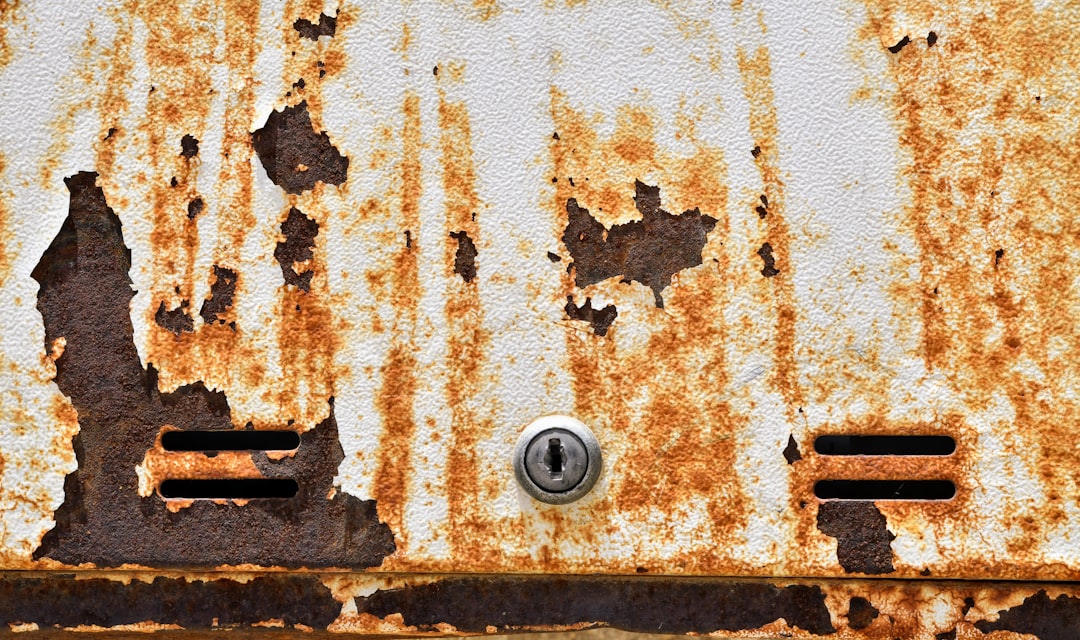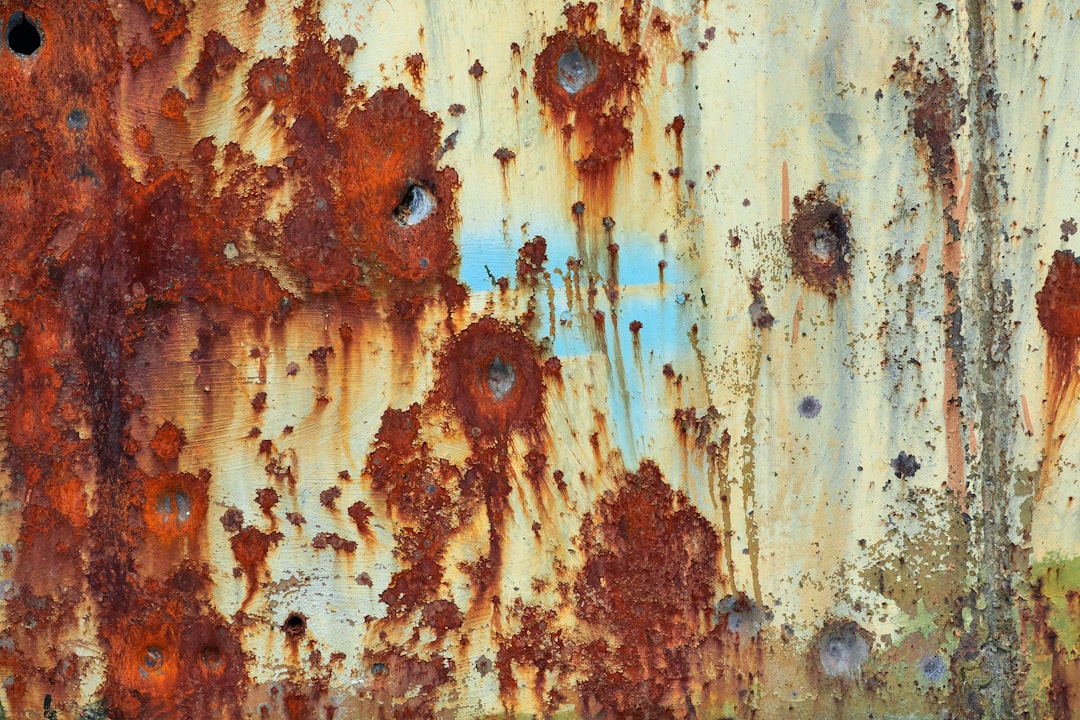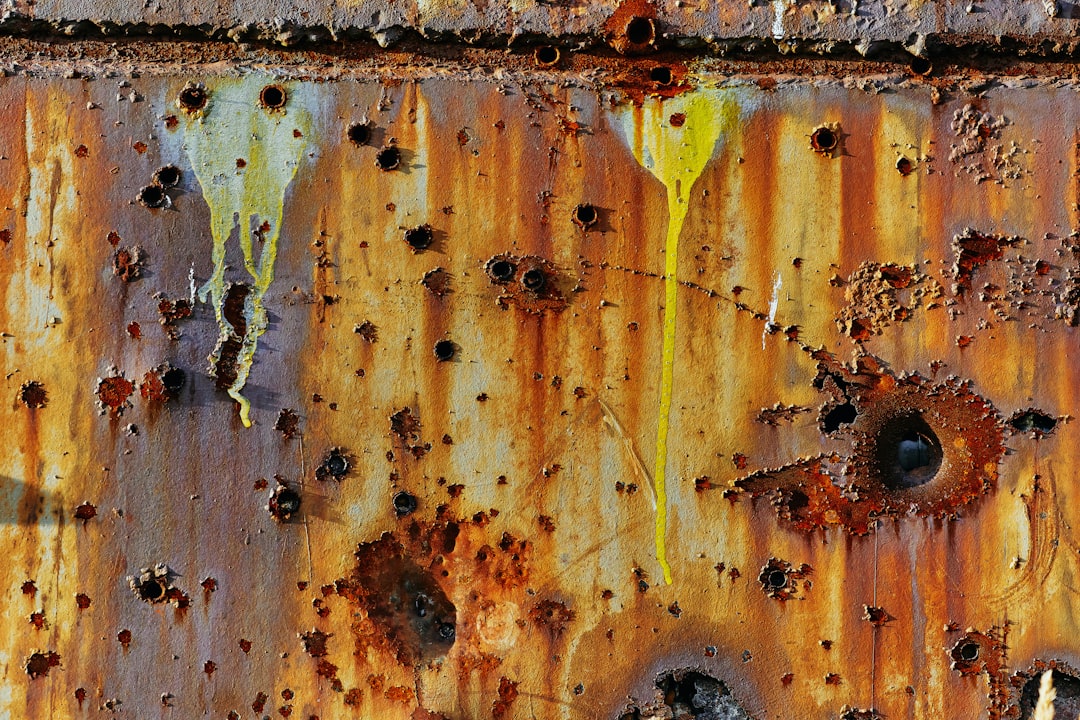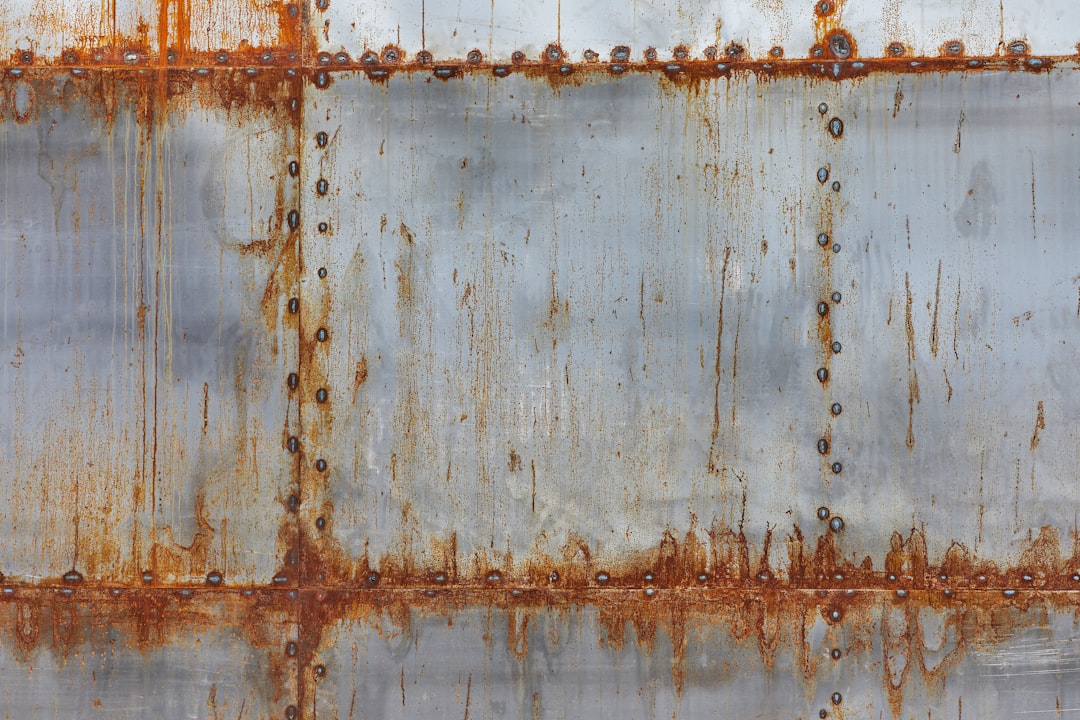

Engage prospects with a scan and streamline customer engagement with FREE QR code marketing tools by Sona – no strings attached!
Create a Free QR CodeFree consultation

No commitment

Engage prospects with a scan and streamline customer engagement with FREE QR code marketing tools by Sona – no strings attached!
Create a Free QR CodeFree consultation

No commitment
In today’s digitally driven landscape, QR codes in marketing have become a vital bridge connecting offline touchpoints to online engagements. For rust prevention services, persistent pain points such as missing high-value prospects who never complete web forms, delayed access to compliance data, or manually tracked service effectiveness undermine both lead capture and operational reliability. QR codes address these gaps by offering a frictionless way for prospective customers and industrial clients to instantly access information on corrosion inhibitors, request anti-rust treatments, or evaluate metal protection options: no apps, long URLs, or paperwork required.
When it comes to metal protection and rust prevention, the stakes are high. Missed or delayed responses do not just result in lost revenue; they allow corrosion issues to escalate or compliance checks to be overlooked. QR codes equip organizations to seamlessly track service effectiveness, direct clients to safety standards, and provide real-time access to eco-friendly options or regulatory updates at the moment of need. This immediacy helps reduce missed opportunities, accelerates decision cycles, and ensures prospects and clients have the information they need wherever they are.
Rust prevention professionals can now harness QR codes to modernize lead capture, surface timely engagement signals, demonstrate compliance, and set themselves apart with data-driven customer experiences. The following sections show how these approaches can address common pain points, from lack of visibility into potential leads to inconsistent communications. Discover actionable steps to transition your rust prevention services toward more connected, measurable, and resilient operations.

Rust prevention programs often rely on analog processes that are slow, fragmented, and hard to measure. Printed brochures, paper inspection forms, and static service tags rarely convert attention into action, and they do not reveal which prospects are ready to buy. QR codes modernize these workflows by turning every physical surface into a digital onramp: a brochure becomes a booking form, an inspection tag becomes a video guide, and a packaging label becomes a dynamic compliance portal.
To drive real business impact, design QR deployments that align with your commercial goals: faster response to corrosion risks, more scheduled inspections, better renewal rates on monitoring contracts, and improved audit readiness. With the right placements, messaging, and analytics, QR codes can shorten sales cycles and make operational outcomes more predictable.
Start creating QR codes for free: Start creating QR codes for free
Rust prevention services work in environments where paper is easily damaged, attention is limited, and timing is critical. Clients might read a flyer, skim a checklist, or receive a service report without taking the next step. QR codes solve this offline-to-online handoff by making it simple to act immediately and by making those actions measurable.
The value is not only convenience. QR codes bring dynamic content delivery, real-time insights, and cost-effective scalability to an industry that often operates under tight margins and strict safety standards. Whether your team is supporting a shipyard, a fleet operation, or a manufacturing plant, QR codes can standardize how information flows and how intent is captured. For strategy context, see Sona: offline attribution. For campaign tactics, review this external QR marketing guide.

Not all QR codes serve the same purpose. Selecting the right format ensures your rust prevention audience gets exactly what they need when they need it. For heavy industry and field environments, formats that reduce friction and speed decision making are especially useful.
Static codes are appropriate for permanent, non-changing content such as a fixed PDF. Dynamic codes are ideal for anything you might need to update: a booking link, a compliance library, a seasonal offer, or a video playlist for technicians. In practice, rust prevention providers benefit most from dynamic codes because content and regulations evolve frequently.
Dynamic QR codes managed through Sona QR allow you to change destinations on the fly, add UTM parameters for attribution, and analyze which code types drive the most valuable actions.

Growth in rust prevention often stalls when teams cannot see where intent is surfacing. Prospects might read a case study or review a checklist, yet never reveal themselves. Placing QR codes at high-traffic, high-intent points in your ecosystem turns these moments into measurable opportunities.
Prioritize placements where scanners are most likely to act, and tailor the call to action to the context. A machine tag might focus on scheduling or reporting a corrosion issue, while a trade-show banner might emphasize pricing or demos. Every placement should be paired with a relevant next step and a clear benefit.
By integrating codes across these touchpoints, you reduce churn, catch high-intent signals in real time, and cut wasted spend on untrackable campaigns.

QR codes shine when they remove barriers to time-sensitive tasks like reporting corrosion, accessing compliance information, or booking maintenance. They also serve clients who need to educate internal teams quickly and consistently across dispersed facilities.
These use cases combine operational efficiency with measurable marketing impact. Each scan becomes a signal: who is engaging, with what content, and at which stage of the buyer or service lifecycle.
Each scan is a moment of intent. When you deploy multiple codes across your buyer and service journeys, you create a rich dataset that segments your audience by role, need, urgency, and environment. This makes follow-up smarter and more personal. For deeper strategy, explore intent data.
Map scans to funnel stages and service milestones, then sync these segments into your CRM and ad platforms. You can trigger playbooks for high-fit accounts, prioritize direct outreach for hot leads, and build remarketing audiences that mirror real-world behavior rather than assumptions.
When powered by Sona QR, scan data feeds directly into systems like HubSpot, Salesforce, and Meta Ads. You can tag contacts by scan source, location, and asset, then retarget with tailored ads, emails, and SMS sequences tied to the exact content they engaged with.
Disconnected campaigns lead to confused messaging and poor conversion. QR codes unify your channels by connecting physical materials with digital content and by feeding live engagement data back into your systems. In rust prevention, where many interactions happen in the field, this connection is essential.
Use codes to bridge every channel in a way that fits the context. A technical brochure should link to specs and demos. A fleet decal should link to quick quotes. An event banner should link to a meeting scheduler. Centralize management so you maintain consistency across assets and can measure impact by channel.
Platforms like Sona QR make it possible to manage codes across all channels, monitor performance in real time, and sync scan activity with your CRM and advertising tools.
QR campaigns work best when each element aligns to a clear business goal and when real-world conditions are accounted for. In rust prevention, that means thinking about surfaces, lighting, safety requirements, and user roles, not just creative and copy.
Use the following steps to plan and launch a campaign that is measurable, resilient, and easy to scale. Each step includes practical guidance tailored to field-heavy environments.
Clarify what success looks like. For example: increasing annual metal inspection appointments by 20 percent, onboarding new fleet maintenance clients in two weeks instead of four, or cutting compliance documentation requests by half through self-serve access. Identify the primary audience segment for the campaign and the action you want them to take.
Translate the goal into one or two priority calls to action and align your content to those outcomes. Decide whether you will measure success by bookings, quote requests, warranty activations, or repeat purchases. This focus will guide your code placement, copywriting, and destination design.
Select code types based on how often the destination might change and how much data you need. Static codes are fine for stable PDFs, while dynamic codes let you update links without reprinting and provide analytics for optimization.
In rust prevention, dynamic typically wins. Compliance documents, pricing, and scheduling links change frequently. Choose dynamic codes when you want trackability, retargeting, and future flexibility. Use Sona QR to manage destinations, add UTM parameters, and segment scans by placement. Start creating QR codes for free: Start creating QR codes for free
Customize codes with your logo, brand colors, and a high-contrast frame that makes scanning easy. Pair each code with a bold, specific CTA and a benefit statement relevant to the environment, such as Scan for corrosion audit or Scan for updated SDS.
Ensure the printed size and placement fit the scanning distance and conditions. In low-light areas or on curved surfaces, increase size and add a bright background. Avoid glossy finishes that reflect light. Include a short fallback URL for redundancy.
Before full deployment, test each code in the environments where it will live: oily metal, painted equipment, high-vibration machinery, outdoor signage with variable lighting, and protective housings. Check scannability from realistic angles and distances with multiple devices.
Validate that destination pages load fast on cellular networks and that forms are mobile friendly. Confirm accessibility and safety considerations, such as keeping codes away from hot surfaces or rotating parts, and ensure the content matches the user’s immediate need.
Roll out across prioritized placements such as trade show booths, machinery tags, packaging, billboards, and direct mail. Stagger deployment if needed to isolate performance by channel. Track scans, conversion behavior, and drop-off in a centralized dashboard.
Use performance data to refine your approach. Shift budget to high-performing placements, A/B test CTAs or landing pages, and rotate offers by audience segment. With Sona QR, you can update destinations, trigger alerts for hot scans, and sync results to your CRM for timely follow-up.
Basic scan counts are not enough. Rust prevention teams need to understand who scanned, what they needed, and whether the engagement led to revenue. Without that view, you are guessing which physical touchpoints and messages are working.
Combining QR analytics with CRM and attribution tools closes the loop. You can connect a scan on a packaging label to a warranty activation, an inspection booking, and ultimately a contract renewal. Teams get clarity on pipeline impact and can justify further investment with Sona: multi-touch.
With Sona QR and Sona.com, you can track every scan, measure engagement by channel, respond in real time, and sync with tools like HubSpot and Salesforce. For deeper identity resolution, see account identification.
QR success compounds when codes are unique, contextual, and connected to automated follow-up. Align your deployment with the way people actually encounter your materials in plants, shipyards, garages, and on the road.
Educate your teams and your customers. A code is only as effective as the promise beside it. Make the benefit explicit and immediate: faster booking, instant compliance access, or a personalized corrosion prevention plan.

QR deployments become powerful when they are woven into natural moments in a rust management lifecycle. The most effective programs pick a few high-impact workflows, measure results, and iterate based on performance.
Use these examples as a starting point, then tailor the CTA, destination, and follow-up to your segments, surfaces, and service models.
Getting QR codes right in industrial settings requires attention to context. Codes must be scannable in variable lighting and on rough surfaces, messages must be concise and benefit-led, and destinations must load quickly on mobile. Execution quality has a direct impact on conversion.
Avoid common mistakes such as cluttering an area with multiple codes, sending scanners to generic homepages, or failing to connect scan events to automated follow-up. Treat your QR program like a performance channel with continuous optimization.
QR codes empower rust prevention services to transform traditional, disconnected touchpoints into measurable, compliant, and intent-rich digital experiences. By reducing friction at every stage, from accessing corrosion prevention guides to surfacing signals of purchase intent, these codes help providers avoid missed opportunities, inconsistent messaging, and costly regulatory lapses. With comprehensive analytics and easy integration into centralized platforms like Sona QR and Sona.com, every scan becomes an opportunity to move prospects down the funnel, segment audiences, and attribute business impact. Adopting QR-driven workflows ensures rust prevention organizations remain agile, data-informed, and ready to capitalize on every engagement in a fast-evolving industrial marketplace.
QR codes have revolutionized rust prevention services by transforming traditional maintenance and inspection processes into efficient, data-driven operations. Whether it’s streamlining access to detailed service records, enabling instant scheduling, or providing timely preventive tips, QR codes enhance customer engagement and operational transparency. Imagine clients effortlessly accessing real-time rust prevention status and recommendations simply by scanning a code—boosting trust and satisfaction.
With Sona QR, you can create dynamic, trackable QR codes tailored to your rust prevention campaigns, update content instantly without reprinting, and gather actionable insights on client interactions. This means every scan becomes an opportunity to deepen relationships, optimize service delivery, and drive repeat business. Start for free with Sona QR today and turn every scan into a gateway for smarter rust prevention and stronger customer loyalty.
The article highlights using QR codes to provide instant access to corrosion inhibitors, anti-rust treatments, and metal protection options, enabling faster response, scheduled inspections, and improved compliance.
Choose services that offer digital tools like dynamic QR codes for real-time access to safety data, maintenance scheduling, compliance updates, and analytics tailored to your industry’s environment and operational needs.
The article emphasizes providing real-time access to eco-friendly rust prevention options via QR codes, helping clients stay informed about sustainable and regulatory-compliant chemical choices.
Effectiveness can be tracked by deploying QR codes linked to digital dashboards that capture scan analytics such as location, time, and user actions, integrating with CRM systems to measure leads, bookings, and revenue impact.
QR codes are a low-cost, scalable solution to enhance rust prevention services by digitizing materials and automating follow-ups without repeated print costs, enabling cost-efficient deployment across multiple channels.
QR codes bridge offline materials to online content, enabling faster, app-free access to information, real-time updates, measurable engagement, and improved operational outcomes in harsh field conditions.
Dynamic QR codes are preferred since they allow updating destinations without reprinting, provide analytics, and support evolving content such as compliance documents, booking forms, and regulatory updates.
Place QR codes on machinery tags, packaging, trade show displays, out-of-home ads, direct mail, and inspection reports to capture high-intent leads and provide immediate next steps relevant to each touchpoint.
By placing QR codes on chemical drums, safety stations, equipment, and packaging to provide instant access to compliance documents, schedule maintenance, activate warranties, and report incidents efficiently.
Use clear, benefit-driven CTAs, customize codes with branding, test codes in real-world conditions, choose appropriate code types, and ensure codes are sized and placed for easy scanning in challenging environments.
Scan data can be segmented by role, urgency, and location to personalize follow-up communications, prioritize outreach, and build remarketing audiences that reflect real-world engagement signals.
Avoid cluttering areas with multiple codes, linking to generic pages, neglecting follow-up automation, and failing to design for real-world scanning conditions, as these reduce effectiveness and conversion rates.
They enable immediate access to information and service requests, automate reminders and renewals, capture onsite leads, and provide measurable engagement data to accelerate decision cycles and reduce delays.
QR codes reduce expenses by replacing printed materials with dynamic digital links, enabling quick updates without reprinting, lowering manual data entry, and improving lead tracking and customer retention efficiently.
By integrating QR scan analytics with CRM and attribution tools to connect scans to appointments, warranty activations, contract renewals, and revenue, allowing data-driven optimization of marketing and sales efforts.
Use Sona QR's trackable codes to improve customer acquisition and engagement today.
Create Your FREE Trackable QR Code in SecondsJoin results-focused teams combining Sona Platform automation with advanced Google Ads strategies to scale lead generation

Connect your existing CRM

Free Account Enrichment

No setup fees
No commitment required

Free consultation

Get a custom Google Ads roadmap for your business






Launch campaigns that generate qualified leads in 30 days or less.
